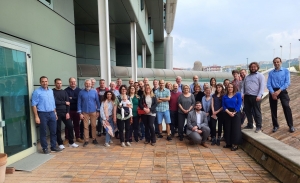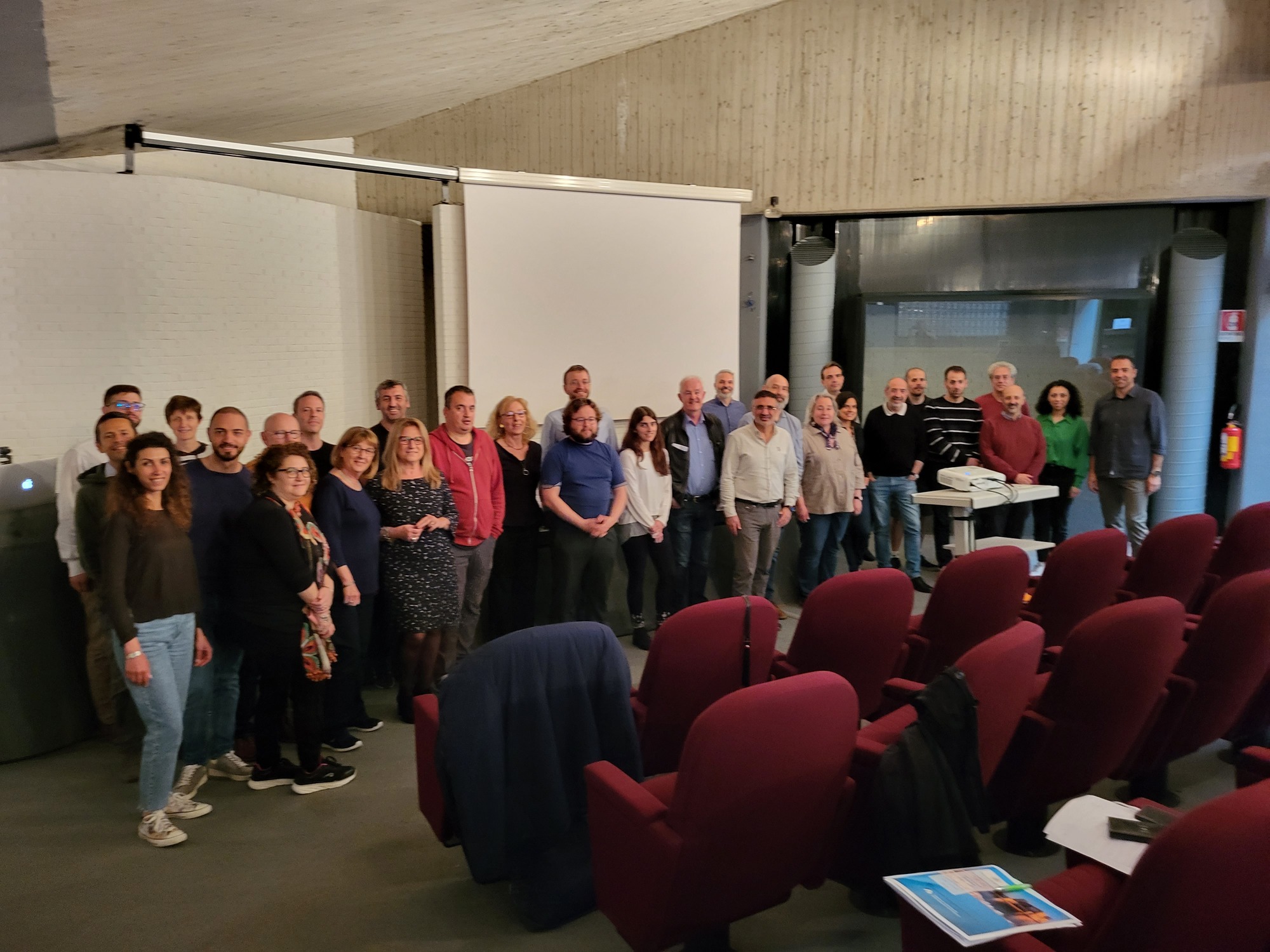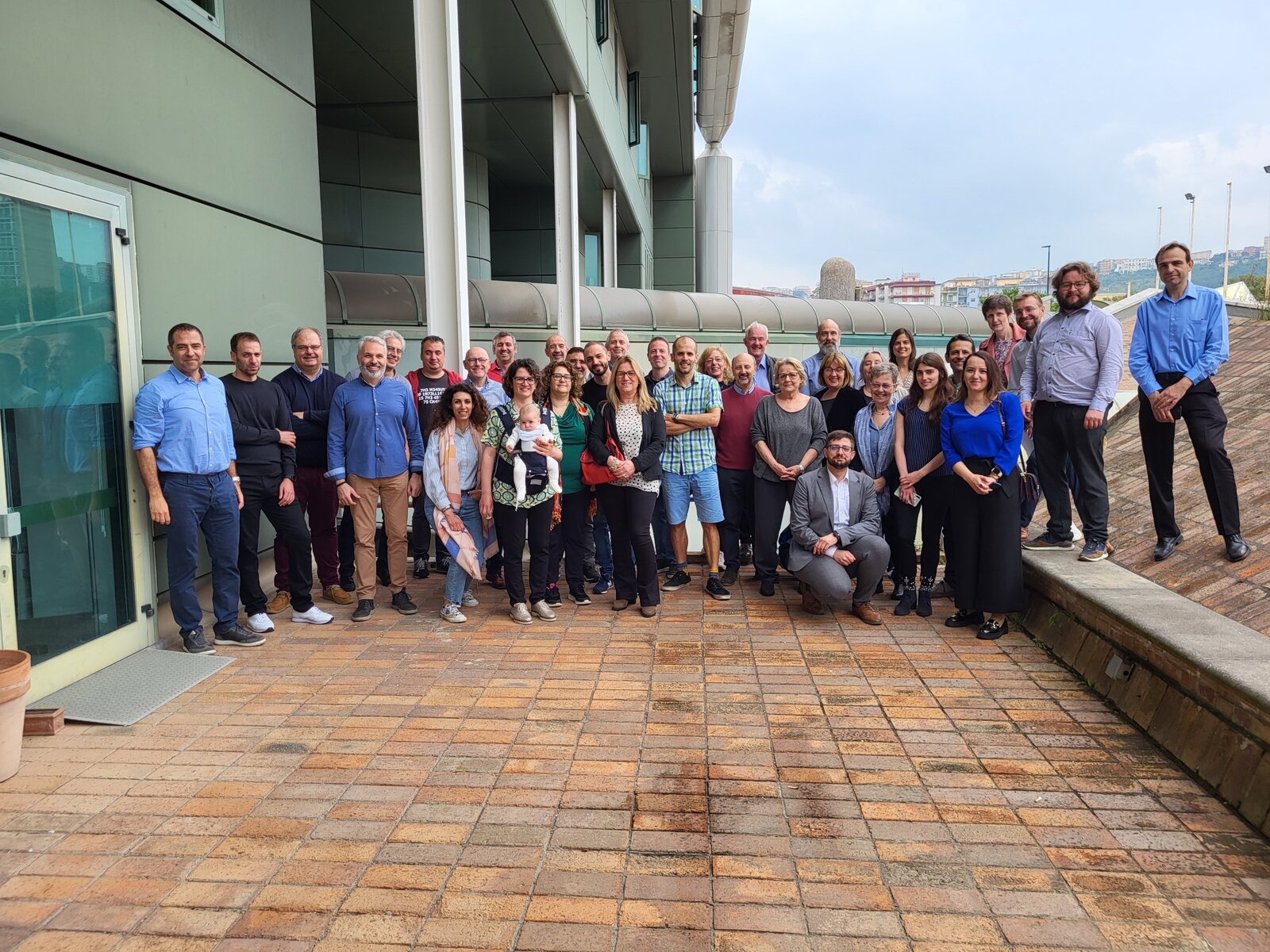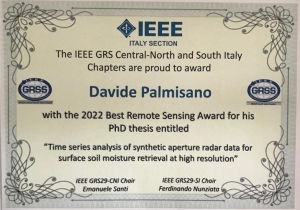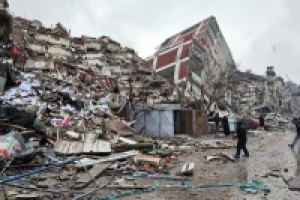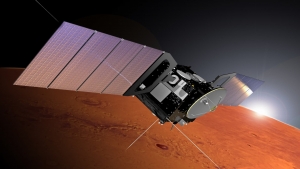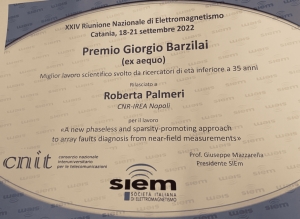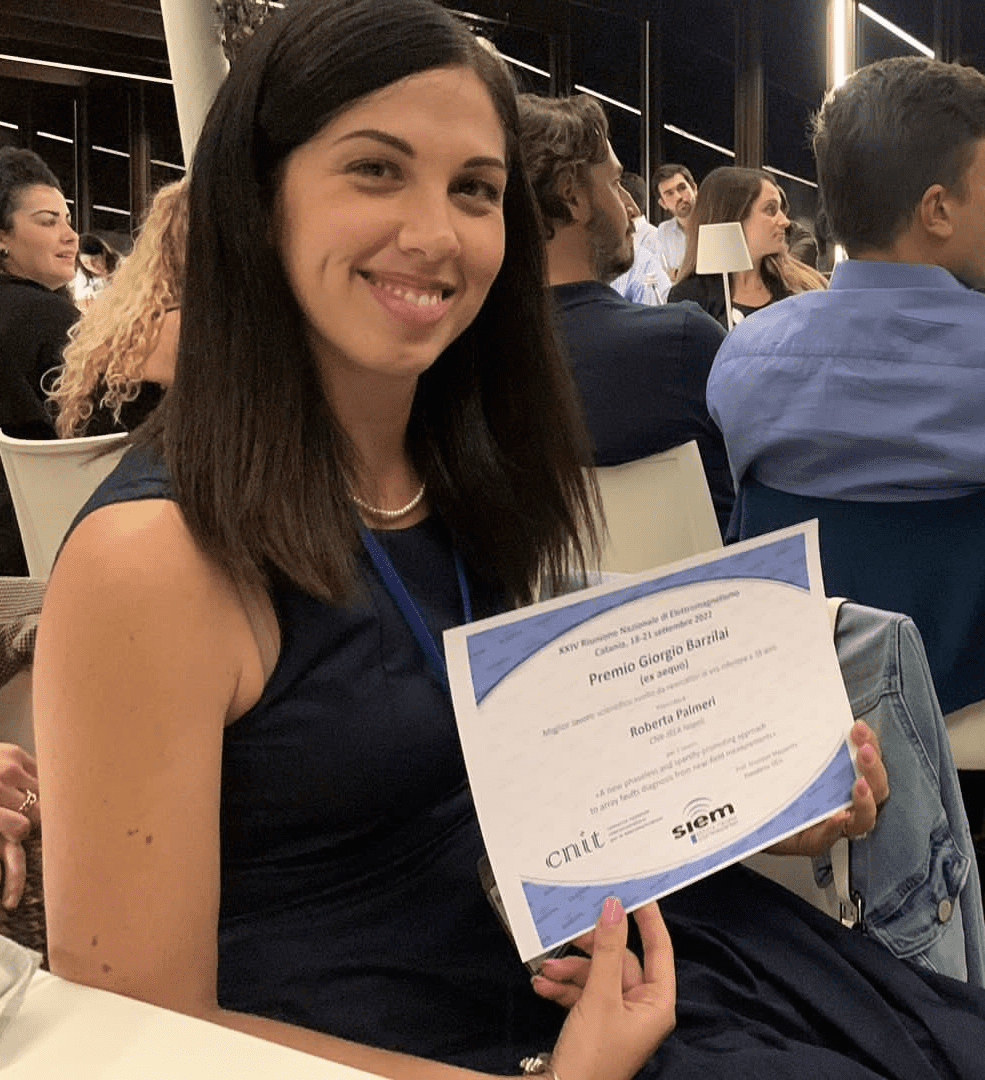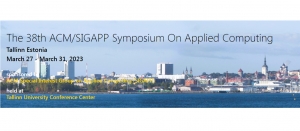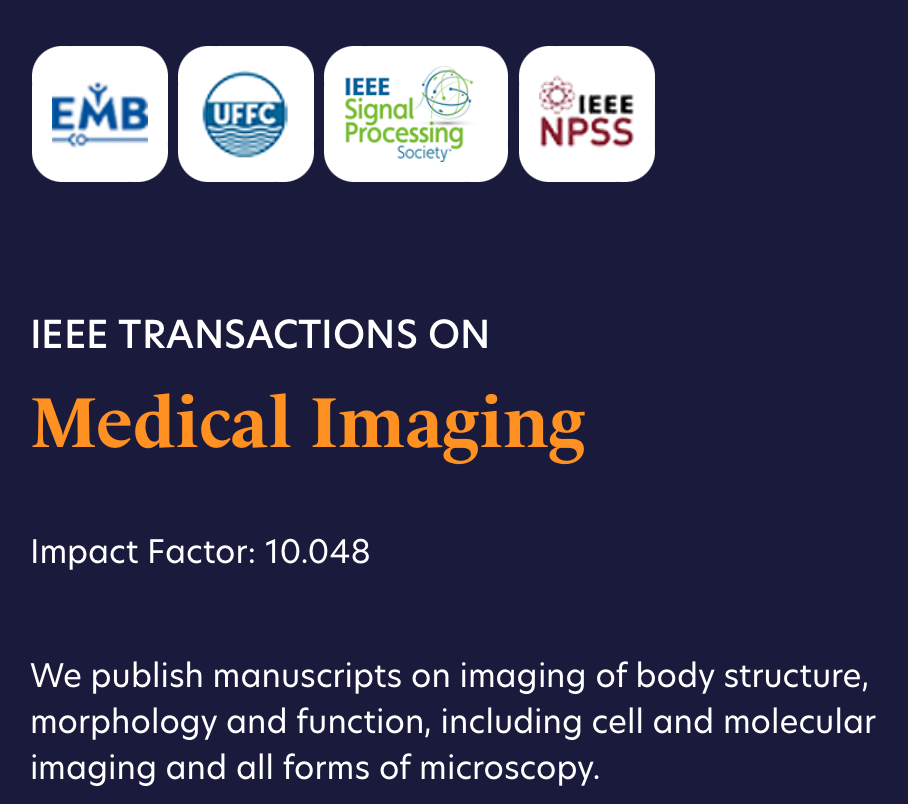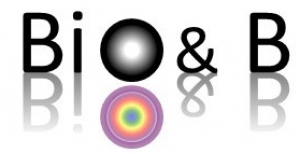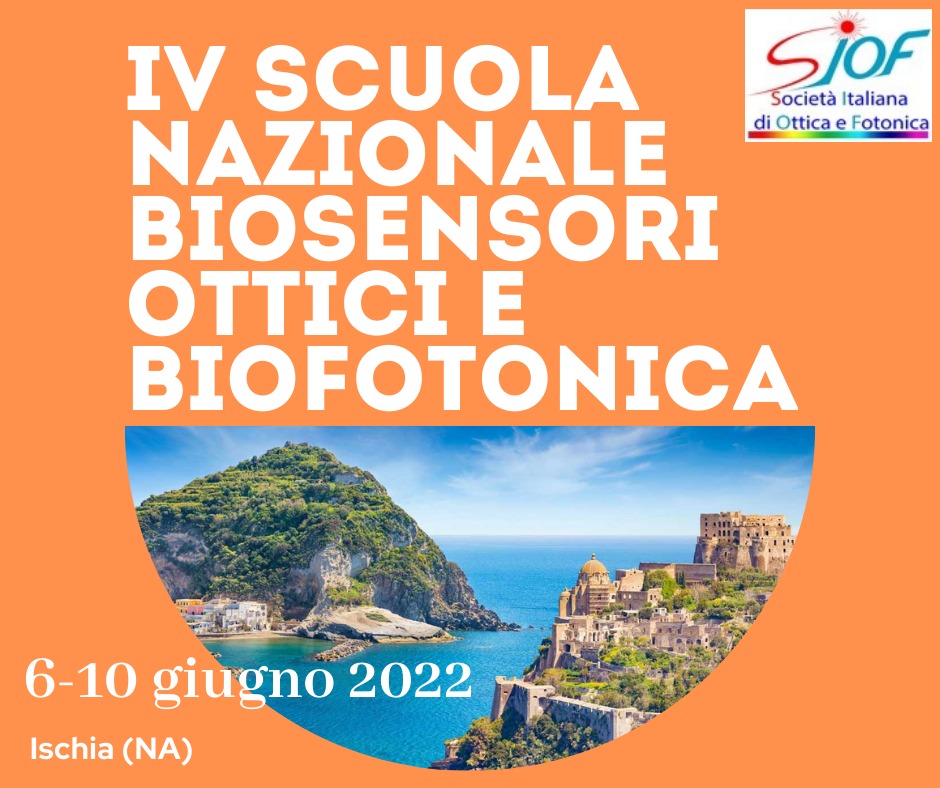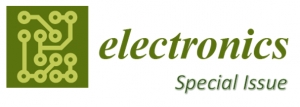
Maria Consiglia Rasulo
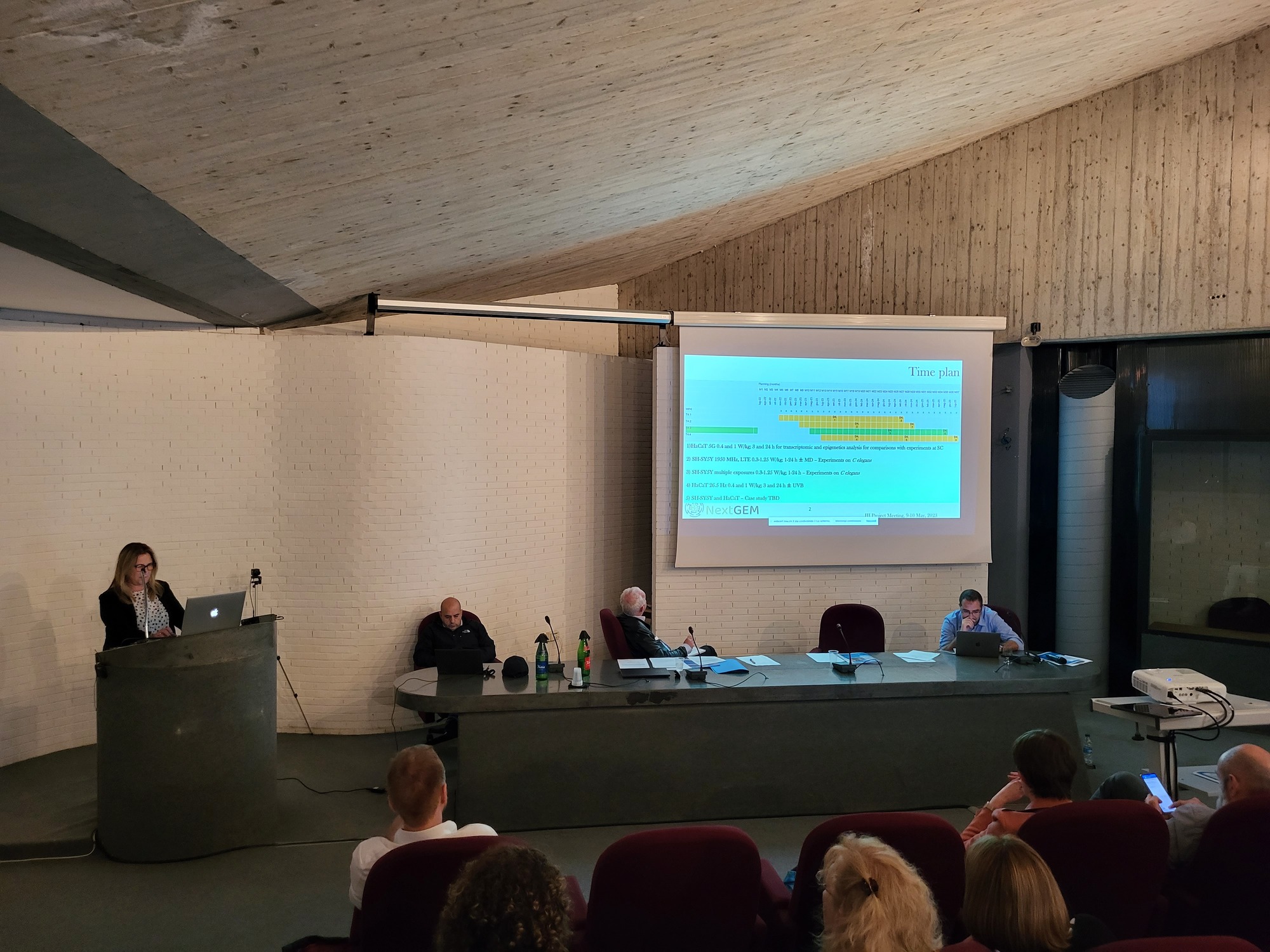 The third Plenary Meeting and the second Technical Workshop of the NextGEM (Next Generation Integrated Sensing and Analytical System for Monitoring and Assessing Radiofrequency Electromagnetic Field Exposure and Health) project have just concluded. NextGEM is funded by the European Commission under the Horizon Europe programme and involve the Bioelectromagnetism group of IREA.
The third Plenary Meeting and the second Technical Workshop of the NextGEM (Next Generation Integrated Sensing and Analytical System for Monitoring and Assessing Radiofrequency Electromagnetic Field Exposure and Health) project have just concluded. NextGEM is funded by the European Commission under the Horizon Europe programme and involve the Bioelectromagnetism group of IREA.
The two meetings, held in Naples on 9 and 10 May at the CNR-STEMS headquarters, were an opportunity to present the activities carried out so far within the project and further develop synergies between the partners of the 20 institutions involved for the achievement of the project goals.
The aim of NextGEM is to develop guidelines for citizens and public authorities regarding exposure to electromagnetic fields (EMF) and to provide rapid and reliable access to relevant scientific knowledge on the subject. Indeed, the adoption of new telecommunications technologies, such as 5G, requires in-depth studies and the updating of scientific evidence on the potential health risks of electromagnetic fields.
The NextGEM project responds to this need by combining the scientific research dimension with a more strictly technological one. The first is aimed at estimating the effects of EMF exposure through experimental studies on humans, small organisms and cultured cells. The second is aimed at defining methodologies and quality criteria for assessing exposure to electromagnetic fields, health risks and interaction mechanisms.
NextGEM also aims to achieve adequate and effective communication that can improve awareness among authorities, citizens and stakeholders by countering disinformation on this issue.
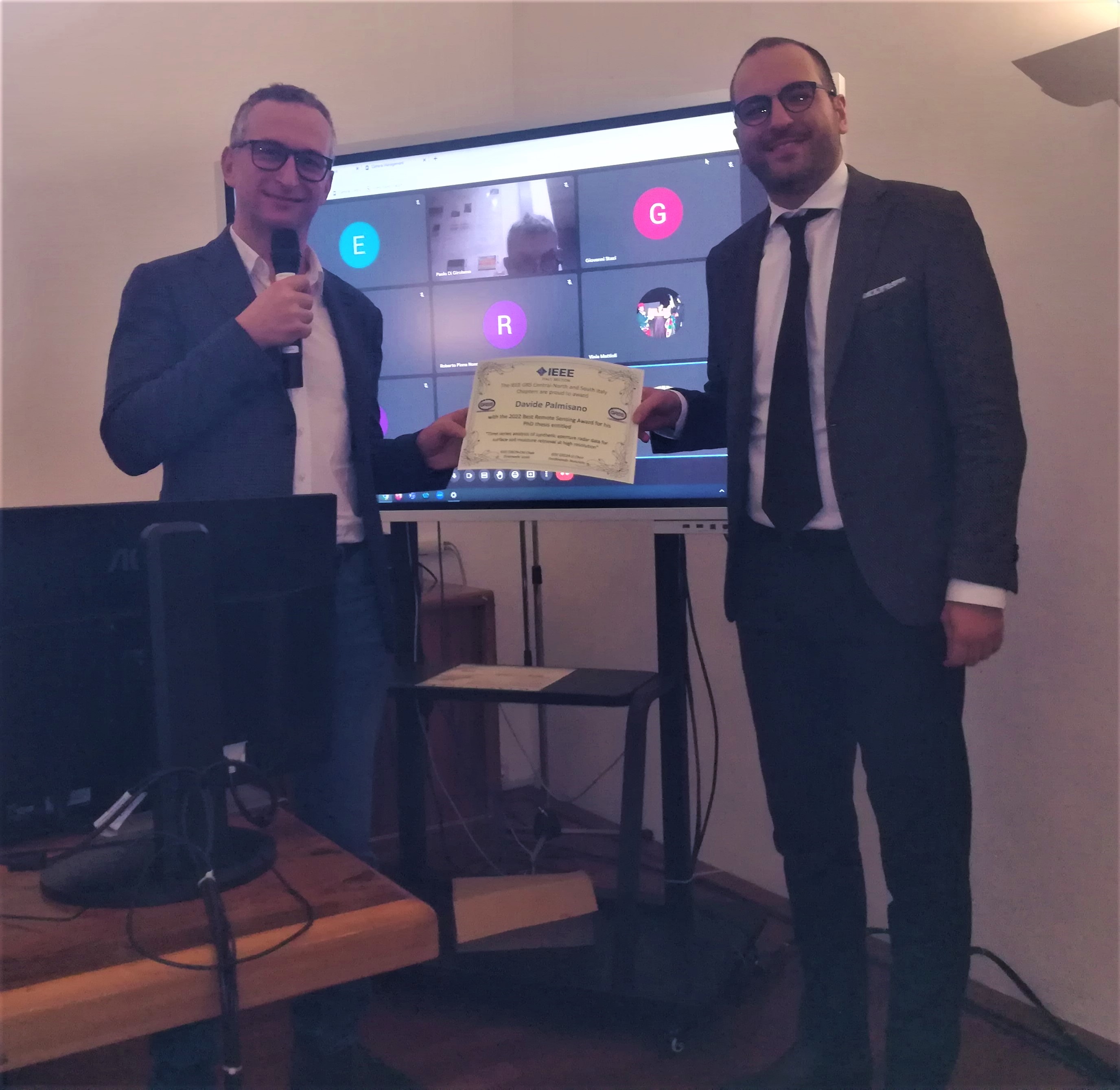 The ceremony of Italy’s Best Remote Sensing Award (IEEE-GRS29) was held in March 2023. The competition, jointly organized again this year by the IEEE Geoscience Remote Sensing Central-North Italy (GRS29-CNI) and South Italy (GRS29-SI) Chapters, saw the awarding of the three best PhD theses and the three best M.Sc. theses on topics of Geoscience and Remote Sensing, defended from 1st of June, 2021 to 31st of May, 2022. Among this year’s candidates, Davide Palmisano has been the winner of the PhD thesis “Time series analysis of synthetic aperture radar data for surface soil moisture retrieval at high resolution” carried out at CNR-IREA and defended at Sapienza University of Rome in February 2022.
The ceremony of Italy’s Best Remote Sensing Award (IEEE-GRS29) was held in March 2023. The competition, jointly organized again this year by the IEEE Geoscience Remote Sensing Central-North Italy (GRS29-CNI) and South Italy (GRS29-SI) Chapters, saw the awarding of the three best PhD theses and the three best M.Sc. theses on topics of Geoscience and Remote Sensing, defended from 1st of June, 2021 to 31st of May, 2022. Among this year’s candidates, Davide Palmisano has been the winner of the PhD thesis “Time series analysis of synthetic aperture radar data for surface soil moisture retrieval at high resolution” carried out at CNR-IREA and defended at Sapienza University of Rome in February 2022.
The thesis has investigated the use of dense time series of synthetic aperture radar (SAR) data for retrieving SSM at high spatial and temporal resolution. The topic is of great scientific and application interest because it bears on understanding the hydrological cycle and improving land applications, such as numerical weather prediction (NWP), flood forecasting, and drought monitoring and prediction.
The Thesis has focused on three thematic insights. The first one has concerned with the retrieval of Surface Soil Moisture (SSM) over agricultural soils using SAR data from the European mission Sentinel-1, acquired at incidence angles higher than 40 degrees. Indeed, the incidence angle is a crucial parameter modulating the SAR data sensitivity to SSM. Davide’s activity has consisted of quantifying the SSM retrieval accuracy as a function of the incidence angle and the agricultural crop. The sensitivity analysis to SSM has been further investigated in the project “SARSense”, funded by the European Space Agency (ESA), organized in view of the future ROSE-L mission. In particular, Davide has been participating in the data collection during the campaign on the Selhausen site (Germany) and has contributed to the data analysis.
A second important focus of the thesis has been on developing a mathematical scheme for SSM retrieval that combines the information content of temporal changes of the SAR interferometric phase and intensity. The underlying motivation is the new availability of dense time series of SAR data that makes timely the integration of incoherent and coherent change detection approaches for surface parameter retrieval.
A third pillar of the thesis concerns the experimental assessment of SAR SSM through in situ measurements. Worldwide, there exist several hydrologic networks, continuously recording in situ SSM, which are used to test the accuracy of retrieved SSM from satellite data. In the near future, various SAR SSM products will likely be available on a large scale on a continuous temporal basis. Davide has investigated aspects related to the development of validation protocols tailored to high spatial resolution SSM products.
Currently, Davide is an assistant researcher at the IREA’s Bari office, where he pursues his research on the retrieval of land biophysical parameters from earth observation data.
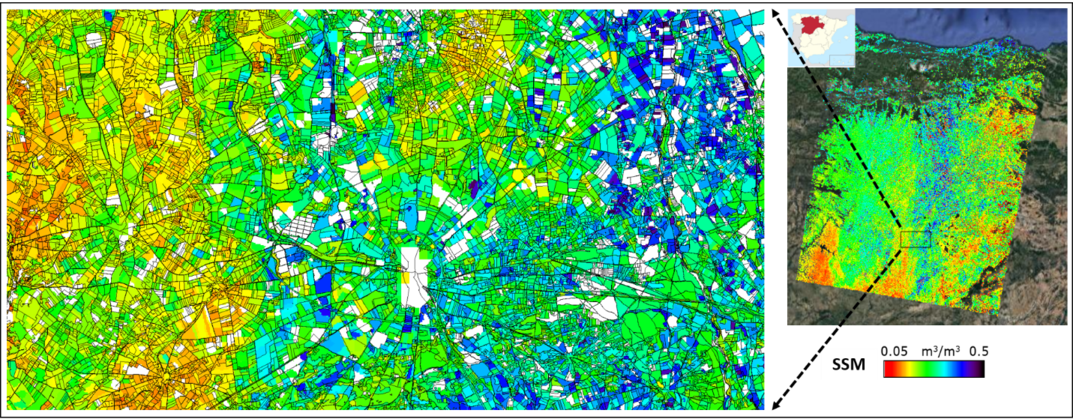
SSM map at ~100 m resolution over Castilla y León, Spain, on 17th of June, 2021. SSM was retrieved using the SMOSAR code (Soil MOisture retrieval from multi-temporal SAR data) developed at CNR-IREA. Left panel: zoom of the SSM map over an agricultural area (parcel borders are in black). Right panel: SSM over the entire area. Higher SSM due to precipitations is in blue. In the inset, the Castilla y León region is reported in red.
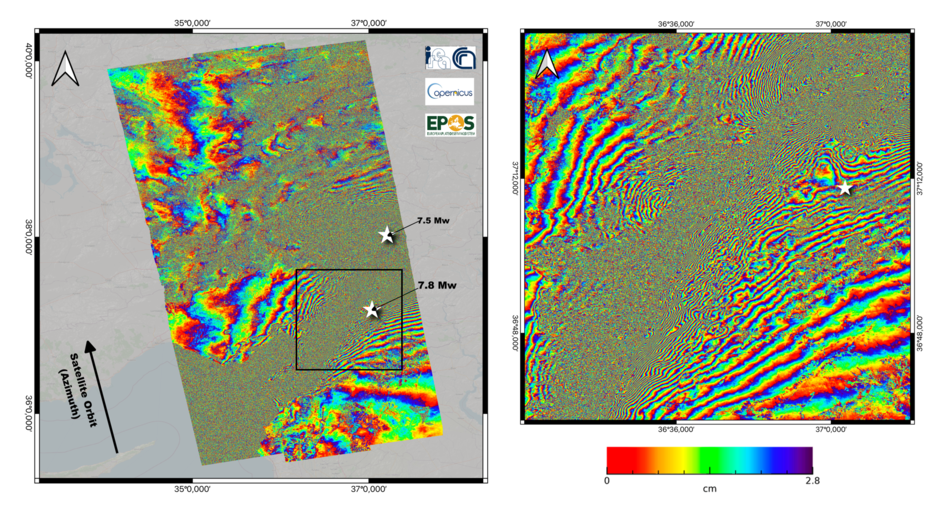 Following the two seismic events of February 6, 2023, that devastated South-East Turkey and Northern Syria and caused tens of thousands of victims and incalculable damage, a team of researchers from the Institute for Electromagnetic Sensing of the Environment of the National Research Council (IREA-CNR) has detected the surface deformation field induced by the considered seismic events by applying the Differential SAR Interferometry (DInSAR) technique. This result has been achieved thanks to a system developed by IREA-CNR as part of EPOS (European Plate Observing System) activities, the European research infrastructure for the solid Earth study. This system makes it possible to generate DInSAR products automatically, following particularly significant seismic events.
Following the two seismic events of February 6, 2023, that devastated South-East Turkey and Northern Syria and caused tens of thousands of victims and incalculable damage, a team of researchers from the Institute for Electromagnetic Sensing of the Environment of the National Research Council (IREA-CNR) has detected the surface deformation field induced by the considered seismic events by applying the Differential SAR Interferometry (DInSAR) technique. This result has been achieved thanks to a system developed by IREA-CNR as part of EPOS (European Plate Observing System) activities, the European research infrastructure for the solid Earth study. This system makes it possible to generate DInSAR products automatically, following particularly significant seismic events.
In particular, a co-seismic interferogram was generated (see Figure 1) by analyzing the radar images of the European Sentinel-1A sensor that operates at a wavelength of about 5.6 cm in the C-band of the microwaves. The images were acquired on January 28 and February 9, 2023. Each "fringe" of the interferogram in the Figure, i.e. each color cycle, corresponds to a shift in the sensor Line Of Sight (LOS) of about 2.8 cm, equal to half the wavelength used. The investigated area extends for 130,000 Km2, of which about 35,000 are affected by significant deformation phenomena testified by the presence of interferometric fringes that in many areas are very dense (see the zoom in Figure 1) due to the displacements, even of several meters, caused by seismic events.
New images of the Sentinel-1A sensor, taken from different orbits, are expected in the next few days and will allow further analyses. Furthermore, a series of acquisitions of radar images carried out by the radar sensors of the Argentine constellation SAOCOM-1, operating in the L-band of microwaves with about 23 cm of wavelength, have already been programmed in collaboration with the Italian and Argentine Space Agencies. They will further extend the results obtained thanks to the analysis based on Sentinel-1A data.
The generated results will be made available through the EPOS portal
Sentinel-1 data was provided through the European Copernicus programme
Figure 1: Sentinel-1 co-seismic interferogram relating to the acquisitions of January 28 and February 9, 2023, carried out along ascending orbits. The image on the right shows a zoom relative to the area corresponding to the black box. The white stars indicate the position of the epicenters of the two seismic events of magnitude 7.8 and 7.5 that occurred on February 6, 2023.
A new study conducted by an Italian-American team which includes Francesco Soldovieri, director of the CNR Institute for Electromagnetic Sensing of the Environment, and published in Nature Communications, confirms the hypothesis - put forward for the first time in 2018 – of the presence of liquid salt water in the subsoil of the Red Planet.
 The discovery of the presence of salt water under the southern polar cap of Mars, made possible thanks to an investigation conducted with the Italian ASI MARSIS radar mounted on board ESA's Mars Express mission, dates back to 2018. The study, carried out by an entirely Italian research team, which also included the Institute for Electromagnetic Sensing of the Environment of the National Research Council (IREA-CNR), was published in the prestigious scientific journal Science.
The discovery of the presence of salt water under the southern polar cap of Mars, made possible thanks to an investigation conducted with the Italian ASI MARSIS radar mounted on board ESA's Mars Express mission, dates back to 2018. The study, carried out by an entirely Italian research team, which also included the Institute for Electromagnetic Sensing of the Environment of the National Research Council (IREA-CNR), was published in the prestigious scientific journal Science.
Two years later another study, published in Nature Astronomy by a multidisciplinary team composed of thirteen researchers including physicists, geologists and engineers, among them Francesco Soldovieri of the IREA-CNR, confirmed the discovery by providing further proof of the existence of saltwater lakes trapped under the ice of the Martian South Pole.
A new study, published on September 28 in Nature Communications by an Italian-coordinated international team, provides now further evidence of the existence of liquid water under the south pole of Mars. In particular, the study was coordinated by the University of Roma Tre and the Institute of Radioastronomy of the National Institute of Astrophysics, with the participation of IREA-CNR together with the University of Southern Queensland (Australia), Southwest Research Institute (USA ) and Planetary Science Institute (USA).
The research concerned the southern Martian polar deposits (the so-called SPLD - South Polar Layered Deposits). The in-depth study and evaluation of the attenuation of the radar signal in the SPLD ice, already detected in the area investigated in the second study, has allowed us to arrive at two important results.
The first is that the attenuation of the MARSIS signal is constant in the entire analyzed region, thus confirming the compositional homogeneity of the polar deposits at the observation scale of the MARSIS radar.
In addition, the estimated attenuation values made it possible to recalculate the value of the reflection coefficient underlying the SPLDs and estimate the relative dielectric permittivity, equal to 40 in the highly reflective area, a situation compatible only with the presence of salt water.
Finally, starting from the estimated attenuation it was possible to obtain important information in terms of dust content in the polar deposits (SPLD), between 5 and 12%, and that the temperature at the base of the SPLD calculated so far had been underestimated. It can easily reach 200K (-73 ° C), ensuring conditions compatible with the presence of salt water in the liquid state.
The set of the results mentioned above, therefore, confirms the presence of salt water at the base of the SPLD as the sole cause of the strong basal reflections in the Ultimi Scopuli region.

An important acknowledgement was given to Rosa Scapaticci, a researcher at CNR-IREA, selected as Associate Editor of the IEEE Transactions on Medical Imaging journal (IF 10.048), as an expert in the field of “Microwave Imaging for Medical Applications”. The aim of the journal is to provide a unifying vision of the sciences of medicine, biology and imaging, as well as to emphasize the synergy between instrumentation, hardware, software, mathematics, physics, biology and medicine through new methods of analysis.
More details on the journal are available at this link.
At this link the complete editorial board
On 6-10 June 2022, SIOF Ottica organizes the "IV National School on Optical Biosensors and Biophotonics - Bio&B” that will be held in Ischia (NA).
It is an Italian initiative to establish a platform for education, discussion and exchange among young researchers working in the field of biosensors and photonics.
Directors: Ambra Giannetti (IFAC-CNR), Maria Grazia Manera (IMM-CNR), Ilaria Rea (ISASI-CNR), Genni Testa (IREA-CNR)
All the details can be found at this link
Call for paper for the Special Issue "Electromagnetic Applications in Industrial and Medicine” of the MDPI open access journal Electronics (ISSN 2079-9292; IF: 2.397; Cite Score 2.7)
Guest Editors: Dr. Roberta Palmeri (IREA-CNR), Prof. Tommaso Isernia (Università Mediterranea of Reggio Calabria), Dr. Colin Gilmore (University of Manitoba, Winnipeg, Canada).
OThe aim of this Special Issue is to collect recent expertise and provide a comprehensive overview of new solutions in applied electromagnetics. Topics of interest include but are not limited to industrial, agricultural and medical tomography, electromagnetic therapy, computational methods, antenna systems and sensors, theoretical and experimental works, and analysis and interpretation of data.
For information see https://www.mdpi.com/journal/electronics/special_issues/electromagnetic_application


